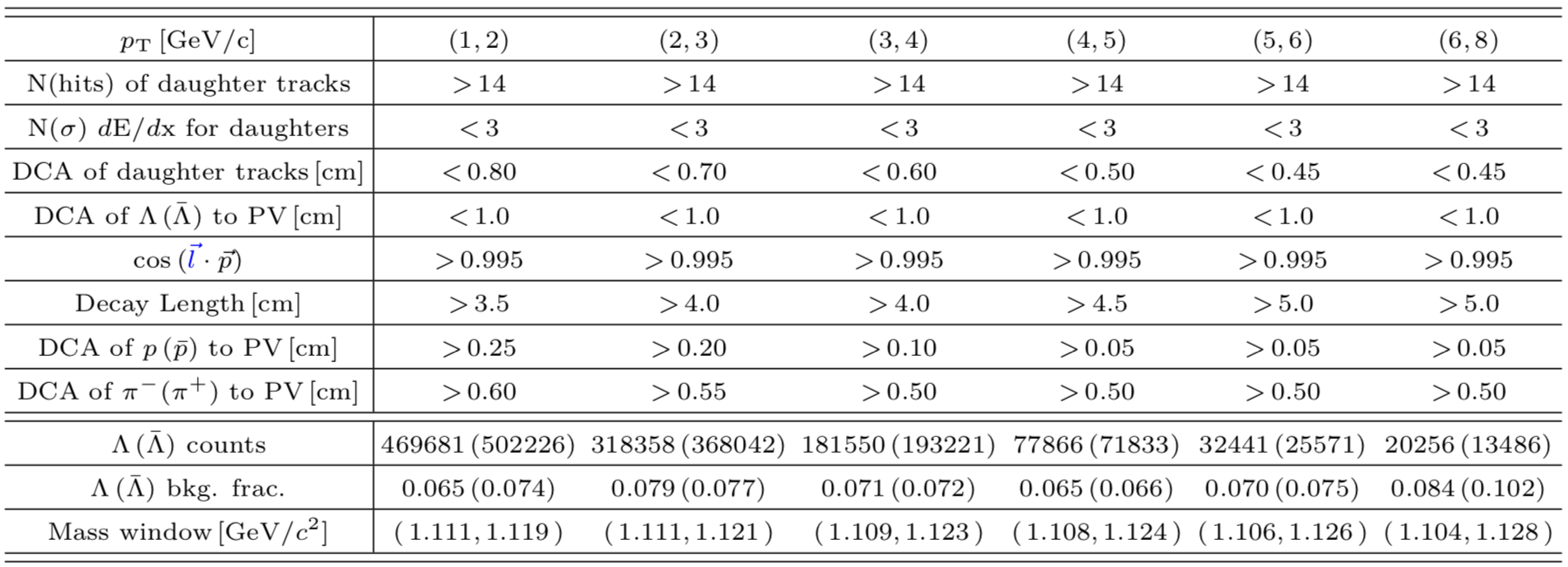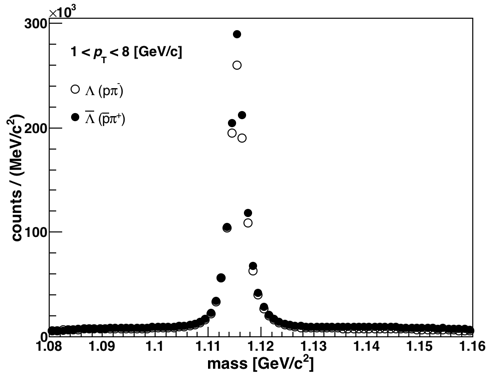- Hard Probes
- Heavy Flavor
- Jet-like correlations
- Other Groups
- Peripheral Collisions
- Spin
- Spin PWG
- Spin/Cold-QCD Older Physics Analysis
- 2006 EEMC Neutral Pion Cross Section and A_LL
- 2006 Gamma + Jet
- 2009 Lambda D_LL @ 200 GeV
- 2009 dijet x-sect/A_LL @ 200 GeV
- 2011 FMS Jet-like correlations @ 500 GeV
- 2011 FMS inclusive pions @ 500 GeV
- 2012 EEMC Neutral Pion A_LL
- 2012 Jet A_LL @ 500 GeV
- 2012 Lambda D_TT @200GeV
- 2012 Pi0 - Jet A_LL @ 500
- 2012 Pions in Jets A_UT @ 200 GeV
- 2012 dijet A_LL @ 500
- 2012/13 FMS A_LL @ 500 GeV
- 2013 Di-jet A_LL @ 500 GeV
- A New Users Guide to PDSF Success
- Analyses from the early years
- Beam Polarizations
- Charged Pions
- Fully Reconstructed Ws
- Jet Trees
- W 2009 analysis , pp 500 GeV
- W 2011 AL
- Useful Links
- Working Group Members
6) Paper proposal
Updated on Mon, 2018-10-22 22:04. Originally created by jcmei on 2017-06-30 04:44.
Under:
Title:
Transverse spin transfer of Lambda and Anti-Lambda Hyperons in Polarized proton-proton collisonns at \sqrt{s}=200 GeV at RHIC
PAs: Jincheng Mei,Qinghua Xu
Proposed Target Journal: Phys. Rev. D
Abstract:

.png)
FIG. 4: The spin transfer $D_\mathrm{TT}$ for $\Lambda$ and $\bar{\Lambda}$ versus $p_\mathrm{T}$ in polarized proton-proton collisions at $\sqrt{s}=200\,\mathrm{GeV}$ at STAR, in comparison with model predictions for (a) positive $\eta$ and (b) negative $\eta$. The vertical bars and bands indicate the sizes of the statistical and systematic uncertainties, respectively. The $\bar{\Lambda}$ results have been offset to slightly larger $p_T$ values for clarity.
.png)
.png)
.png)
Tables:
TABLE I: Summary of selection cuts and the Λ and Λ̄ candidate counts and the residual background fractions in each pTbin. Here “DCA” denotes distance of closest approach, and N(σ) quantitatively measures the distance of a particle track to a certain particle band in dE/dx vs. rigidity space[28]. \ver{l} is representative of the vector from PV to Λ decay point and p⃗ is the reconstructed momentum of Λ.

Web links:
2, Statistics of Lambda and anti-Lambda Reconstruction, Jet near-side
2, MC and data comparison for inclusive hyperons
3, MC and data comparison for jet near-side hyperons
Main Analysis Code:
Transverse spin transfer of Lambda and Anti-Lambda Hyperons in Polarized proton-proton collisonns at \sqrt{s}=200 GeV at RHIC
PAs: Jincheng Mei,Qinghua Xu
Proposed Target Journal: Phys. Rev. D
Abstract:
The transverse spin transfer from polarized protons to Λ and Λ̄ hyperons is expected to provide sensitivity to the transversity distribution of the nucleon and to the transversely polarized fragmen- tation functions. We report the first measurement of the transverse spin transfer to Λ and Λ̄ along the polarization direction of the fragmenting quark, D_TT, in transversely polarized proton-proton collisions at sqrt{s} = 200 GeV with the STAR detector at RHIC. The data correspond to an integrated luminosity of 18 pb−1 and cover the pseudorapidity range |η| < 1.2 and transverse momenta p_T up to8 GeV/c. The dependence on p_T and η are presented. The D_TT results are found to be comparable with a model prediction, and are also consistent with zero within uncertainties.
Figures:
FIG. 1: The invariant mass distribution for Lambda (open circles) and anti-Lambda (filled circles) candidates for trigger combined sample after selections with 1 <$p_{\mathrm{T}}$ < 8 GeV/c in this analysis.

FIG. 2: The invariant mass distribution versus cos\theta^{*} for Lambda candidates in the jet near-side with 1< p_T < 8 GeV/c in this analysis as an example.
.png)
FIG. 3: The spin transfer $D _{TT}$ versus cos for a) $\Lambda$ and b) $\bar{\Lambda}$ hyperons, and c) the spin asymmetry $\delta_{TT}$ for the control sample of $K_S^0$ mesons versus cos/theta in the $p_T$ bin of (2,3) GeV/c for triggered combined sample. The red circles show the results for positive pseudo-rapidity $\eta$ with respect to the polarized beam and the blue squares show the results for negative $\eta$. Only statistical uncertainties are shown.
FIG. 1: The invariant mass distribution for Lambda (open circles) and anti-Lambda (filled circles) candidates for trigger combined sample after selections with 1 <$p_{\mathrm{T}}$ < 8 GeV/c in this analysis.

FIG. 2: The invariant mass distribution versus cos\theta^{*} for Lambda candidates in the jet near-side with 1< p_T < 8 GeV/c in this analysis as an example.
.png)
FIG. 3: The spin transfer $D _{TT}$ versus cos for a) $\Lambda$ and b) $\bar{\Lambda}$ hyperons, and c) the spin asymmetry $\delta_{TT}$ for the control sample of $K_S^0$ mesons versus cos/theta in the $p_T$ bin of (2,3) GeV/c for triggered combined sample. The red circles show the results for positive pseudo-rapidity $\eta$ with respect to the polarized beam and the blue squares show the results for negative $\eta$. Only statistical uncertainties are shown.
.png)
FIG. 4: The spin transfer $D_\mathrm{TT}$ for $\Lambda$ and $\bar{\Lambda}$ versus $p_\mathrm{T}$ in polarized proton-proton collisions at $\sqrt{s}=200\,\mathrm{GeV}$ at STAR, in comparison with model predictions for (a) positive $\eta$ and (b) negative $\eta$. The vertical bars and bands indicate the sizes of the statistical and systematic uncertainties, respectively. The $\bar{\Lambda}$ results have been offset to slightly larger $p_T$ values for clarity.
.png)
Tables:
TABLE I: Summary of selection cuts and the Λ and Λ̄ candidate counts and the residual background fractions in each pTbin. Here “DCA” denotes distance of closest approach, and N(σ) quantitatively measures the distance of a particle track to a certain particle band in dE/dx vs. rigidity space[28]. \ver{l} is representative of the vector from PV to Λ decay point and p⃗ is the reconstructed momentum of Λ.

Summary:
In summary, we report the first measurement on the transverse spin transfer, DTT, to Λ and Λ ̄ in transversely polarized proton-proton collisions at \sqrt{s} = 200 GeV at RHIC. The data correspond to an integrated luminosity of 18 pb−1 taken at STAR experiment in the year of 2012, which cover mid-rapidity, |η| < 1.2 and pT up to 8GeV/c. The DTT value and precision at the highest pT bin, where the effects are expected to be largest, are found to be DTT = 0.031 ± 0.033(stat.) ± 0.008(sys.) for Λ and DTT = −0.034 ± 0.040(stat.) ± 0.009(sys.) for Λ ̄ at ⟨η⟩ = 0.5 and ⟨pT⟩ = 6.7 GeV/c. The results for DTTare found to be consistent with zero for Λ and Λ̄ within uncertainties, and are also consistent with model predictions.
In summary, we report the first measurement on the transverse spin transfer, DTT, to Λ and Λ ̄ in transversely polarized proton-proton collisions at \sqrt{s} = 200 GeV at RHIC. The data correspond to an integrated luminosity of 18 pb−1 taken at STAR experiment in the year of 2012, which cover mid-rapidity, |η| < 1.2 and pT up to 8GeV/c. The DTT value and precision at the highest pT bin, where the effects are expected to be largest, are found to be DTT = 0.031 ± 0.033(stat.) ± 0.008(sys.) for Λ and DTT = −0.034 ± 0.040(stat.) ± 0.009(sys.) for Λ ̄ at ⟨η⟩ = 0.5 and ⟨pT⟩ = 6.7 GeV/c. The results for DTTare found to be consistent with zero for Λ and Λ̄ within uncertainties, and are also consistent with model predictions.
Paper draft and review:
Paper draft history
Latest paper draft version: paperDraft modified with PRD referee
PWGC review
Collaboration review
Analysis Note:
Analysis Note Draft
Support Materials:Paper draft history
Latest paper draft version: paperDraft modified with PRD referee
PWGC review
Collaboration review
Analysis Note:
Analysis Note Draft
Web links:
- Lambda reconstruction status
2, Statistics of Lambda and anti-Lambda Reconstruction, Jet near-side
- MC production and data comparison
2, MC and data comparison for inclusive hyperons
3, MC and data comparison for jet near-side hyperons
- Trigger Bias
1, Trigger bias parameters (fz_shift, feed-down fraction, fragmenting parton flavor fraction, subprocess fraction) plots
2, Uncertainty to D_TT from trigger bias
Presentations:
- DIS17
- SPIN2016
- May 16, 2017 Collaboration Meeting, Update of the systematic uncertainty
- Sep. 19, 2016 spinpwg meeting, Preliminary result request
- Nov. 10, 2017 PWGC Meeting
Main Analysis Code:
»
- Printer-friendly version
- Login or register to post comments
